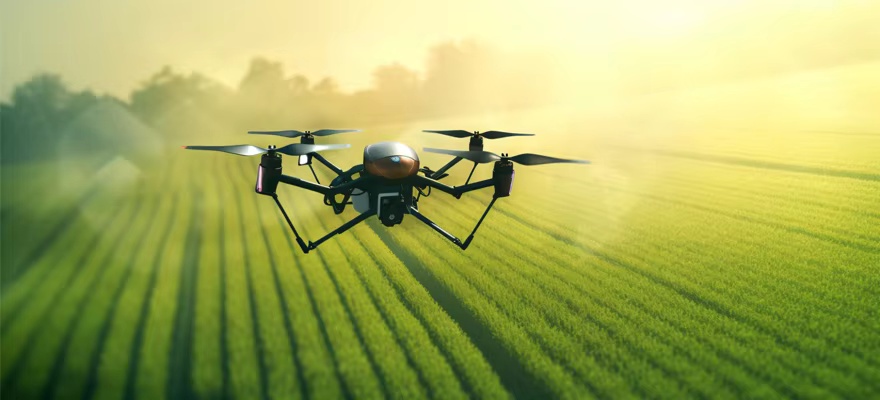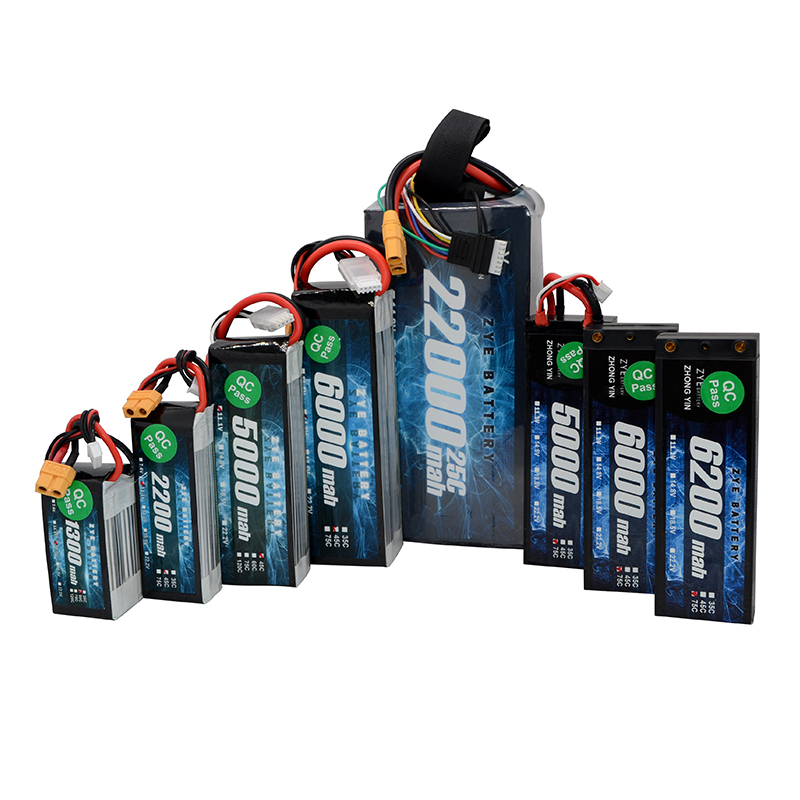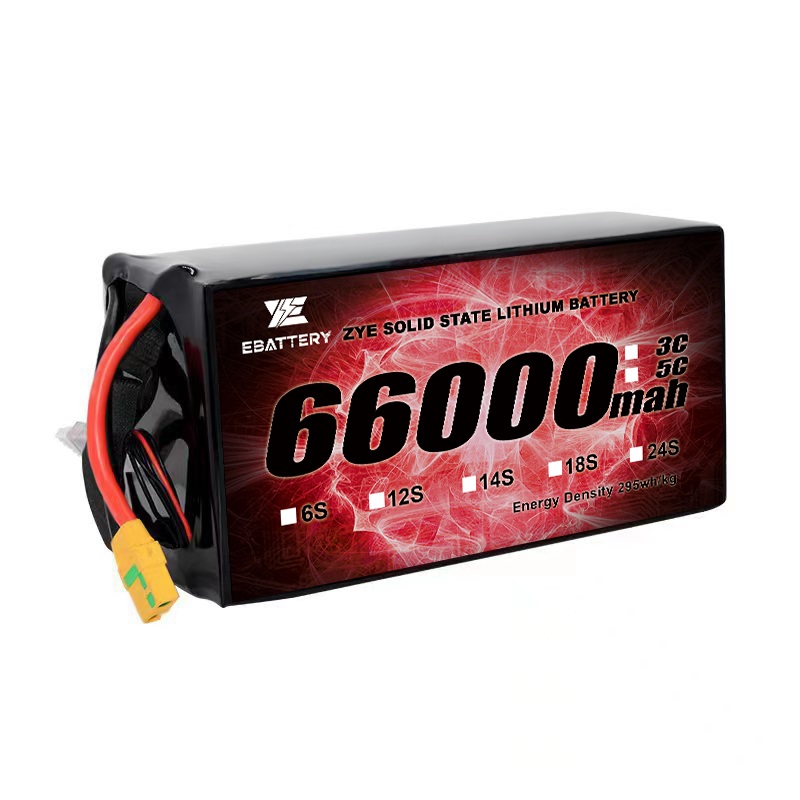How to classify drone batteries by different standards?
2025-10-14
As drone applications continue to expand—from consumer aerial photography and agricultural crop protection to industrial inspections and emergency rescue—the varying demands on the core power source of drones—batteries—become increasingly apparent. Understanding the classification standards for drone batteries enables quick identification of products that meet specific needs. Today, we'll dissect drone battery categories from different classification dimensions, clarifying the core characteristics and suitable applications of each battery type.

I. Classification by Chemical Composition: The Foundation of Core Battery Performance
1. Lithium Polymer Battery (LiPo):
Lithium polymer batteries dominate consumer aerial photography drones due to their dual advantages of “high energy density + lightweight design.”
Key features include energy densities reaching 250-400 Wh/kg, weighing over 30% less than traditional batteries at equivalent capacity, and significantly extending flight endurance. Their flexible pouch packaging allows custom shapes—such as slim or irregular designs—to fit compact aerial camera drones perfectly.
2. Lithium-ion Batteries (Li-ion):
Lithium-ion batteries excel in longer cycle life, lower cost, and superior safety. Their cycle count reaches 500-1000 times—1.5 to 2 times that of lithium polymer batteries—making them ideal for industrial drones requiring high-frequency operations, such as logistics delivery and long-term power inspection drones.
Their drawbacks include slightly lower energy density (approximately 200-300 Wh/kg) and relatively higher weight, making them more suitable for scenarios prioritizing stable endurance over portability.
3. Nickel-Metal Hydride Batteries (Ni-MH):
Ni-MH batteries demonstrate superior environmental resilience in extreme conditions like low temperatures and high humidity. They operate stably between -30°C and 60°C and lack memory effect, making them suitable for specialized drone applications such as polar research and high-altitude rescue missions. However, Ni-MH batteries have low energy density (only 60-120 Wh/kg), are heavy, offer short endurance, and exhibit self-discharge (approximately 10%-15% per month). Currently used primarily as backup batteries for niche applications, they are gradually being replaced by high-performance lithium batteries.
II. Classification by Physical Structure: Adapting to Different Models
1. Customized Batteries:
Specialized models like agricultural crop protection drones and large industrial inspection drones often require customized batteries due to unique airframe space constraints and payload demands.
Custom batteries offer superior compatibility and energy utilization but lack versatility. They cannot be interchanged across different drone brands or models, necessitating specific replacements for each design, which increases maintenance costs.
2. Standardized Batteries: The “Universal Choice” for Consumer Markets
Consumer-grade aerial photography drones prioritize user-friendly replacement, predominantly using standardized batteries. These feature uniform shapes and universal interface specifications.
III. Classification by Voltage Specifications: Matching Drone Power Requirements
Different drone motor powers demand varying battery voltages. By voltage specifications, batteries are categorized into single-cell units and multi-series combinations:
1. Single-cell batteries: Compact and lightweight, these batteries power drones individually. They offer low cost and easy replacement but provide limited flight time (typically 5-15 minutes).
2. Multi-series combination batteries: Medium-to-large drones (e.g., crop-spraying drones, logistics drones) require higher motor power. Multiple single-cell batteries are connected in series to increase voltage, forming “multi-series combination batteries.”
The voltage and capacity of multi-series batteries can be adjusted as needed. For example, a 6-series battery suits medium-sized aerial photography drones (20-30 minute endurance), while a 14-series battery suits large agricultural drones (40-60 minute endurance).
IV. Classification by Application Scenario: Aligning with Practical Needs
1. Consumer-grade batteries: Lightweight and endurance
Emphasizing lightweight and portability, these typically feature capacities of 2000-5000mAh, voltages of 11.1-14.8V, flight times of 15-30 minutes, and support fast charging.
2. Agricultural-Grade Batteries: High Capacity and Weather Resistance
Capacity typically exceeds 10,000mAh, voltage ranges from 22.2-51.8V, featuring waterproof, dustproof, and shock-resistant properties (IP67 protection rating). Designed to withstand mud, water, and dust in field conditions, with a runtime of 30-60 minutes.
3. Emergency-grade batteries: Extreme environments
Wide temperature tolerance (-30°C to 60°C), featuring shock resistance and corrosion protection. Some models incorporate explosion-proof enclosures, making them suitable for scenarios like earthquake rescue and forest firefighting. They deliver stable power supply in harsh conditions.
4. Industrial-Grade Batteries: Long Cycle Life & High Stability
Long cycle life (800-1200 cycles), supports high-current discharge (10-20C discharge rate), suitable for high-frequency operations like logistics delivery, power line inspections, and oil/gas pipeline monitoring.
Conclusion
As drone technology advances, battery classifications continue to refine. For instance, novel solid-state batteries are gradually entering the consumer market and may emerge as a new classification category in the future. Understanding battery classification standards not only helps users select products accurately but also enhances comprehension of the matching logic between battery performance and drone applications, enabling more efficient and safer drone operation.

























































